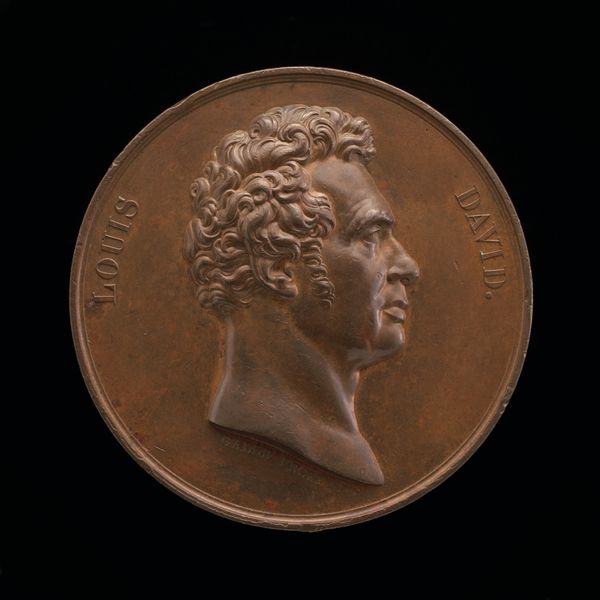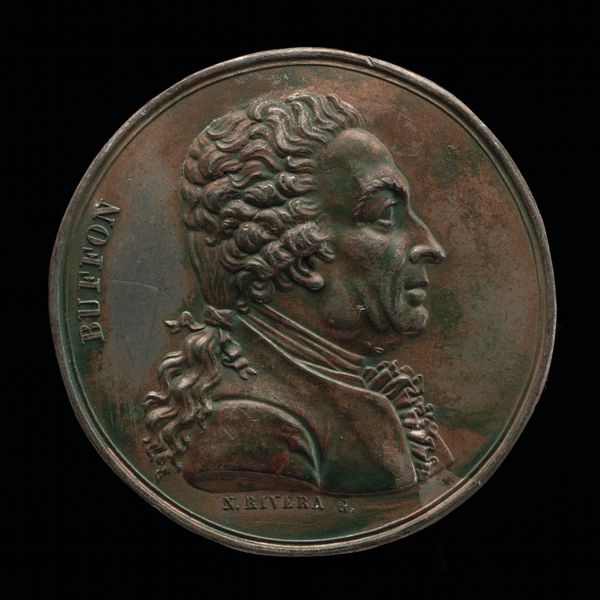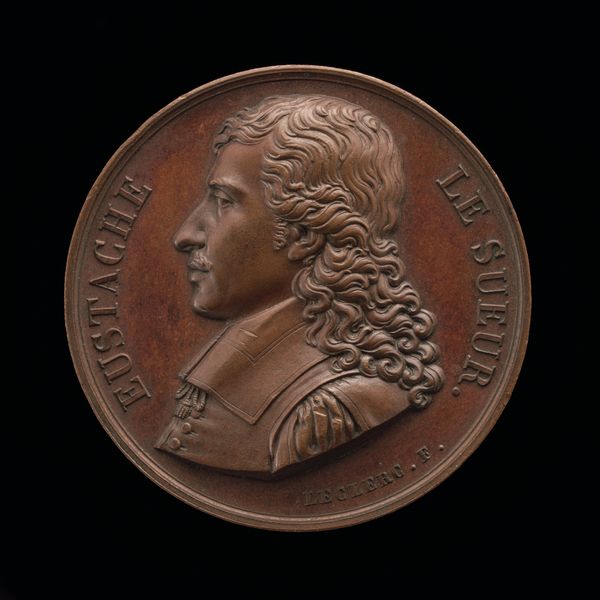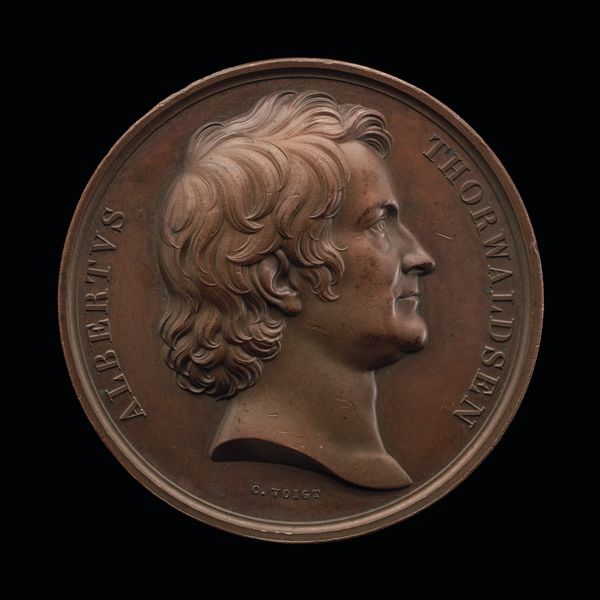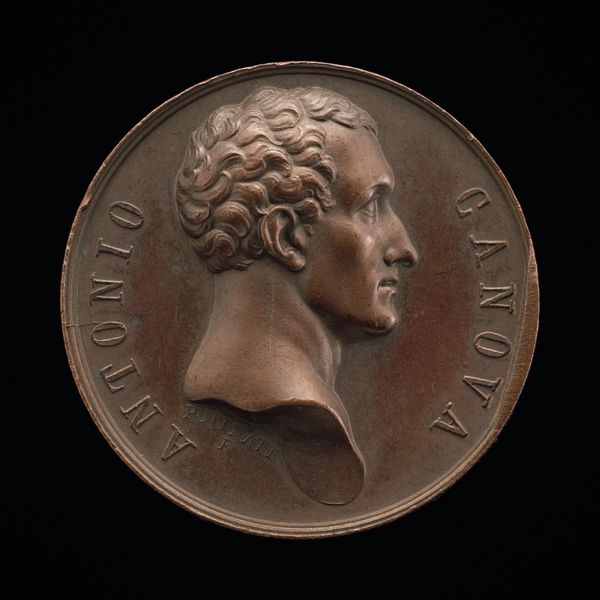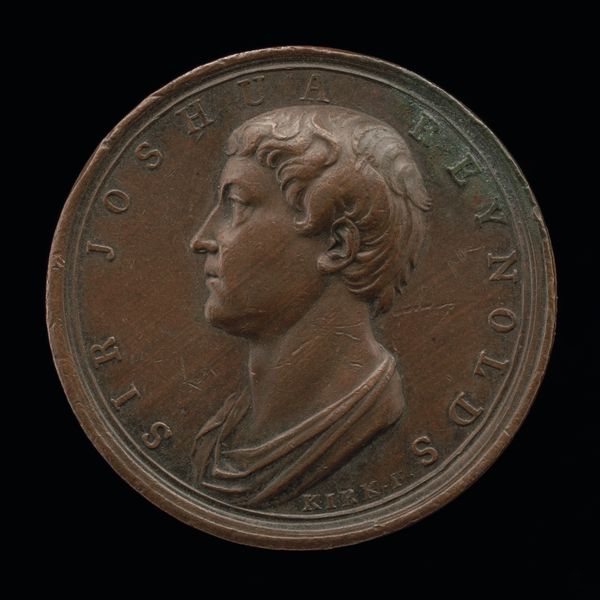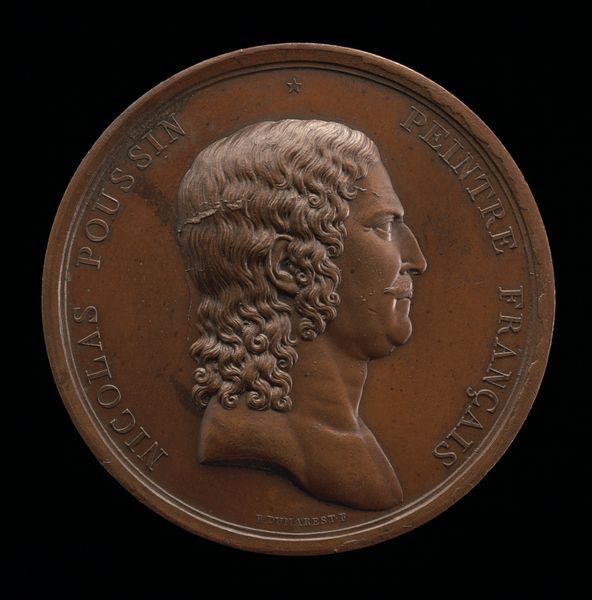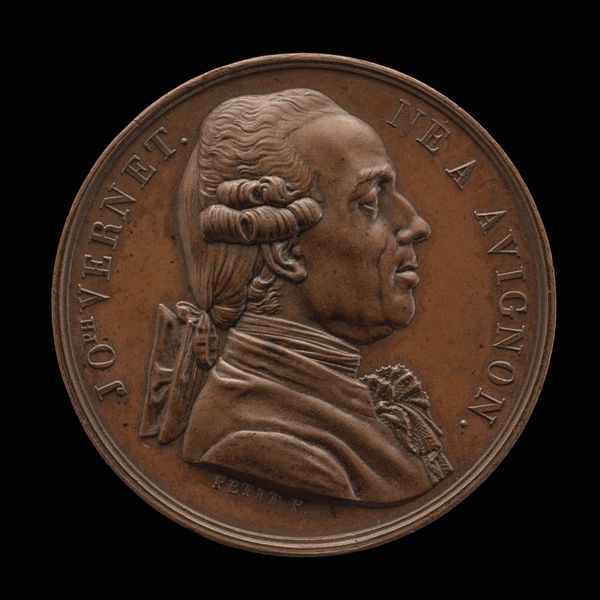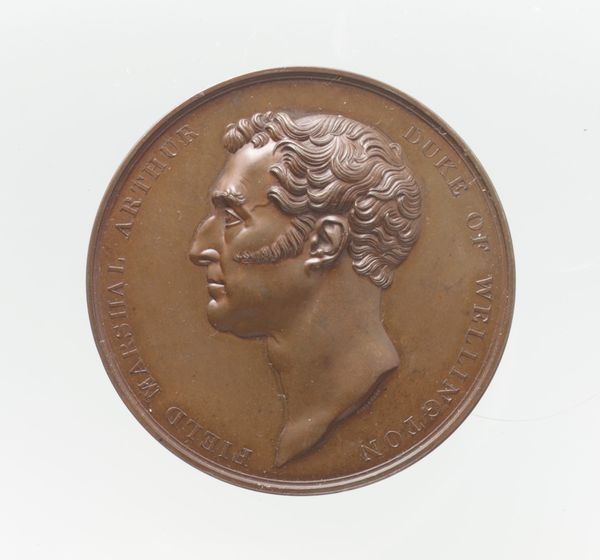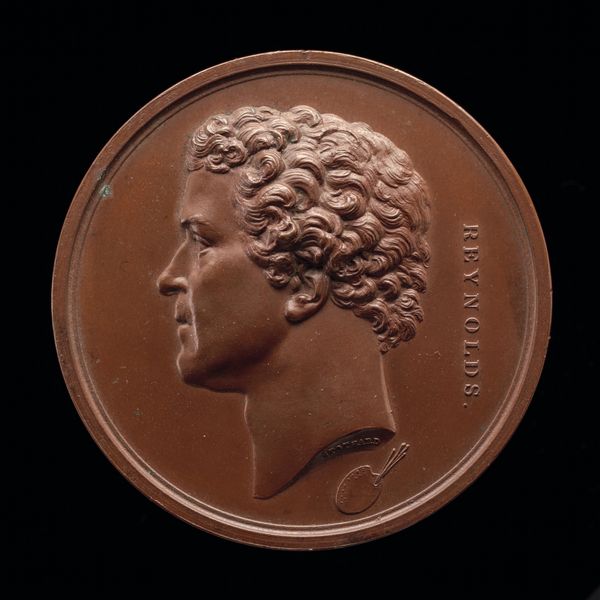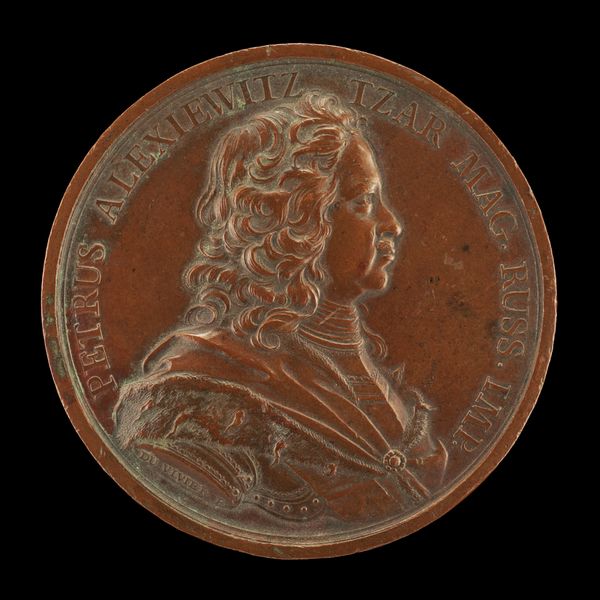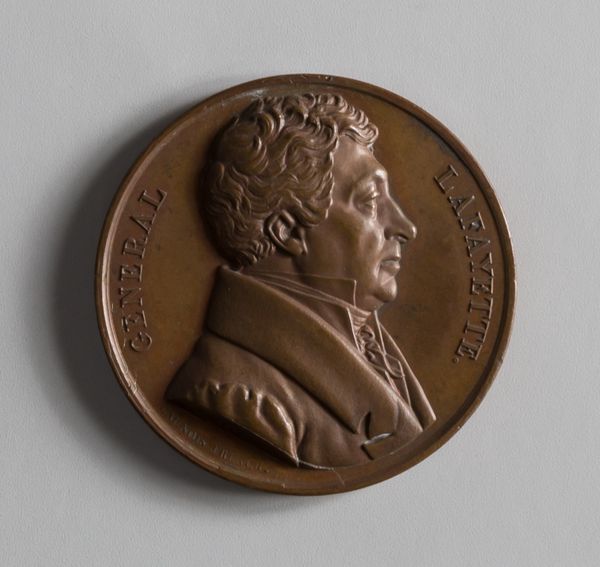![Lord Byron, 1788-1824, Poet [obverse] by William Binfield](/_next/image?url=https%3A%2F%2Fd2w8kbdekdi1gv.cloudfront.net%2FeyJidWNrZXQiOiAiYXJ0ZXJhLWltYWdlcy1idWNrZXQiLCAia2V5IjogImFydHdvcmtzLzU3ZDFiZTEwLTcxOWItNGE0Yi05MzhjLTQ3OTVjMmUxNjU3MS81N2QxYmUxMC03MTliLTRhNGItOTM4Yy00Nzk1YzJlMTY1NzFfZnVsbC5qcGciLCAiZWRpdHMiOiB7InJlc2l6ZSI6IHsid2lkdGgiOiAxOTIwLCAiaGVpZ2h0IjogMTkyMCwgImZpdCI6ICJpbnNpZGUifX19&w=3840&q=75)
bronze, sculpture
#
portrait
#
sculpture
#
bronze
#
sculpture
#
romanticism
#
history-painting
Dimensions: overall (diameter): 4.1 cm (1 5/8 in.)
Copyright: National Gallery of Art: CC0 1.0
Editor: This bronze sculpture depicts Lord Byron and was created in 1824. The profile view is so dignified, even heroic. What do you see in this work? Curator: This piece is so interesting as an artifact of the Romantic era, and Byron himself was deeply involved in political struggles. Knowing he died in Greece, supporting their war for independence, can we see this not just as a portrait, but as a piece of political memorabilia, almost propaganda? What stories does this object tell us about celebrity, political allegiance, and even the early 19th-century obsession with revolutionary movements? Editor: Propaganda? That's a strong word. I mainly saw it as a tribute to his literary genius. Is it common to find political intentions behind portraiture of literary figures? Curator: It depends. Consider that Byron’s image was carefully curated. The romantic hero, the brooding rebel – these weren't just literary personas. How might the artist be complicit in shaping Byron's political image? Think about how wealth and title are subtly, or not so subtly, emphasized, aligning him with certain power structures even as he supported revolutionary causes. It's complex. Editor: So it’s not just about what Byron did, but about how the portrait helps shape the perception of his actions and perhaps even obscure some aspects of his identity or social standing? Curator: Precisely. It's a fascinating example of how art becomes enmeshed within larger social and political narratives. The symbolism present could certainly contribute to different interpretations of Byron’s character. Editor: I had only considered the artistic merit of the work itself, now I understand it can show us so much more! Curator: Exactly! These works serve as evidence to social concepts during that historical period, and also ask that we contextualize them as such.
Comments
No comments
Be the first to comment and join the conversation on the ultimate creative platform.
